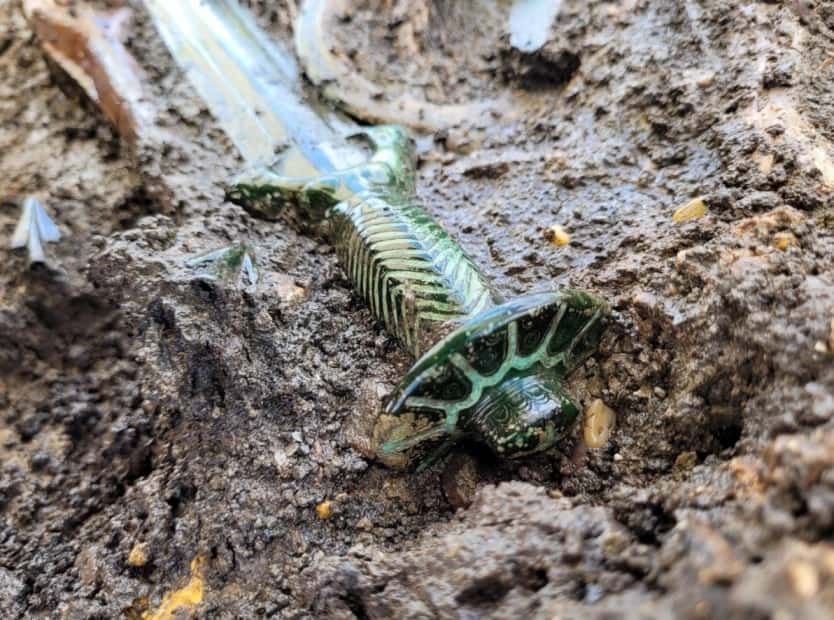After thousands of years buried in the ground, you would expect any object to start decaying. But that’s not the case with a Bronze Age sword recently found in Germany. It’s over 3,000 years old and it’s in such good shape that it still glimmers, the researchers said, describing this as a rare finding that will need to be studied further.

The stunning weapon was found in the town Nördlingen in Bavaria, Germany, and could date to the 14th century BC, according to a statement by the Bavarian State Office for Monument Protection. Most Bronze Age remains in the area belong to the Urnfield Culture, which preceded the Tumulus Culture, and had advanced metalworking skills in weaponry.
In its heyday, the Urnfield culture spanned across much of Europe. Urnfield sites are found from France to Romania and from northern Italy to southern Scandinavia. The culture is characterized not only by its funerary customs but also by its artifacts, including bronzes of many types (axes, knives, jewelry, etc). Other significant artifacts include the spoked wheel and the horse-drawn chariot, indicating advanced technology and transportation.
Like many prehistoric cultures, not much is known about the Urnfield culture’s societal structure or beliefs. However, archaeological evidence suggests that they were skilled farmers, traders, and metalworkers. This sword highlights just how good they were at metalworking.
“Archaeologists made a very special find during excavations in Nördlingen: a bronze sword that is over 3,000 years old and is so extraordinarily well preserved that it almost still shines. It is a representative of the bronze full-hilt swords, whose octagonal hilt is made entirely of bronze (octagonal sword type),” a translation of the statement reads.
A very impressive sword
The octagonal shape of the sword makes it a very rare find, the researchers said, as only the most skilled blacksmith could make these swords (known as Achtkantschwert in German) that require precise casting and decoration. “The production of octagonal swords is complex because the handle is cast over the blade,” the statement reads.
Rare and specialized swords such as this one were exclusively crafted at two locations in Germany, one in the northern region and the other in the southern region. The discovery holds special significance due to its rarity, as burial mounds in the area where the sword was unearthed have been previously breached and plundered.
Although the sword showed no evidence of being used in combat, it can still be regarded as a functional weapon. The blade’s center of gravity towards the front suggests its potential for executing slashing maneuvers with ease. But the absence of cut marks also suggests it could have been used for a symbolic or ceremonial purpose.
“The sword and the burial still have to be examined so that our archaeologists can classify this find more precisely,” Mathias Pfeil, head of the Bavarian State Office for Monument Protection, involved with the sword’s conservation, said in the statement. “But it can already be said: the condition is exceptional! A find like this is very rare!”
The sword was spotted at the burial site of a child, a woman, and a man. However, it remains unclear whether these people were related to each other. Despite these questions, the finding of the sword is exciting for archaeologists overall. The research team will continue their work to try to answer more questions about this very rare sword.









